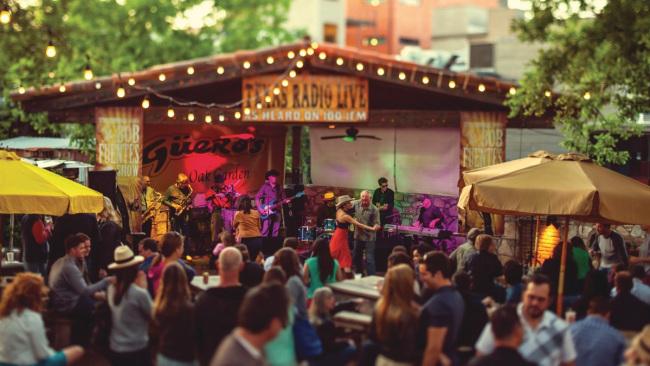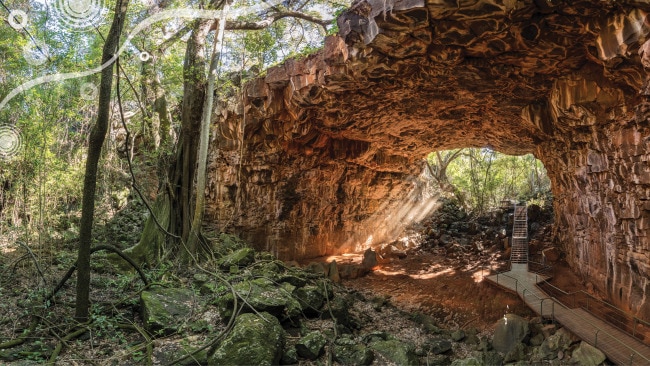A music lover’s guide to Austin, Texas
Each year thousands of people make the pilgrimage to Austin to discover the next big music acts. But there’s so much more to sample than just SXSW.

Austin is just one of those towns, oozing with character, cool sounds and creativity. Home to South by Southwest (SXSW) music conference, Levitation Festival and Austin City Limits, the world travels to Austin for live music; and Austin amplifies live music to the world.
Austin’s nascent live music industry developed in the ’20s, around the dawn of jazz and the migration of Mexican Tejano music, but the scene as it is today took root in the ’60s and ’70s, as a young Janis Joplin, then a student at the University of Texas, played her first shows at Threadgill’s Bar & Grill on North Lamar Boulevard, honing her aching voice before she caught the freedom train out west.
Over on Barton Springs Rd, the Armadillo World Headquarters became the nexus of a new kind of sound blending country and rock music, The Austin Sound, sometimes called “cosmic cowboy”. Local legends Willie Nelson and Stevie Ray Vaughan were Armadillo regulars, and visitors ranged from Frank Zappa and ZZ Top to Bruce Springsteen, The Clash and AC/DC. Vaughan and Nelson also played over on Sixth St at Antone’s, a legendary blues club that opened in 1975, along with James Brown, Muddy Waters and B.B. King, among others.
Willie Nelson is Austin’s favourite son — he has a street named after him in town — and he was there for the birth of its greatest musical institution: Austin City Limits. Originally a musical variety hour made for television, Nelson performed in Austin City Limits’ pilot episode, shot in 1974. The program was broadcast for the first time in 1976, from Studio 6A in the Communications Building B on the University of Texas campus, and has remained on air ever since, making it the longest running music show in the history of American television. In 2010, both the show and Studio 6A were inducted into the Rock ’n’ Roll Hall of Fame. The following year, Austin City Limits migrated to the 2750-capacity Moody Theatre in downtown Austin, right there on Willie Nelson Boulevard.
The music scene in Austin proliferated throughout the ’80s and got to be a point of pride for the local population. Enterprising local government members did an official count and noted that Austin had more live venues per capita than any other city in the US, and in 1991 passed a motion to officially adopt the “Live Music Capital of the World” slogan. Whether or not this was technically true, it became a guiding star for the city.
The mothership of all things music in Austin is SXSW, first held in 1987 for an audience of 700 people. First billed as a regional music conference, the scope and ambition of the event grew steadily throughout the ’90s, thanks in large part to the availability of venues for showcasing acts and high-profile keynote speakers. By the dawn of the new millennium, SXSW was the place to catch the best emerging talent from around America, with more than 1000 artists playing the event each year.
By the 2000s, the five-day event in March had become the world’s launching pad for new music. With well over 10,000 music industry delegates attending each year, tens of thousands of fans turning out for concerts and events, and north of 2000 bands playing official and unofficial showcases, SXSW has become an industry behemoth that captures that attention of the entire globe. It is a mecca for music lovers, who make the pilgrimage to Austin each year to walk in the flood of people on Sixth St; to seek out new pop-up venues south of Congress or on the hipster East Austin; to visit stalwarts like Stubb’s Bar-B-Q and Mohawk, where some epic concerts go down. From a distance, the rest of us wait to see which artist will be crowned the next big thing at SXSW — a sure sign they are set to take over the world.
Parallel to SXSW, Austin was nurturing another epic live music event, the Austin City Limits Music Festival. Inspired by the award-winning TV show, the ACL festival launched in Austin’s leafy Zilker Park in 2002. The event showcases the best in new rock, indie, folk, electronic, hip-hop and punk music. Thanks to consistently on-point programming, its popularity has steadily grown, ultimately becoming one of the biggest contemporary music festivals in the US. In 2012, the ACL festival split over two weekends of identical programming, allowing more than 450,000 people to attend. In the week-long break between the weekends, visiting superstars regularly appear on the Austin City Limits TV show, completing the ACL circle and reinforcing the legacy.
While ACL and SXSW were busy becoming too big to fail, another homemade live music event was quietly becoming an indie institution. Levitation Festival (formerly Psych Fest) was founded by Austin psychedelic rock outfit The Black Angels and conceived as a tightly curated concept festival. As would become tradition, The Black Angels headlined the first event in 2008, backed by local acts including The Strange Boys and Ringo Deathstarr. Word quickly spread about the quality of the line-up and the relaxed vibes at Carson Creek Ranch where the event is held, and Levitation became yet another destination event drawing music lovers to the city each April.
Today, Austin’s calendar of major music events is virtually year-round. Carnaval Brasileiro brings the sounds of Latin America to town in February, while the Urban Music Festival celebrates R&B, jazz, funk and reggae in March. Zydeco, brass and blues lovers get a feast of music in April at the Louisiana Swamp Thing and Crawfish Festival, which is the same month that the Old Settler's Music Festival and the Austin Reggae Festival are held. The list goes on.
And when there’s a lull in the music festival calendar, Austin is still Austin. There are more than 200 live music venues in the city — from concert halls to clubs and dive bars, and everything in between — and almost 2000 bands and performing artists that are proud Austin residents. Throw a rock, you’ll hit a rollicking good time. If you love live music, Austin is home.
Originally published as A music lover’s guide to Austin, Texas


